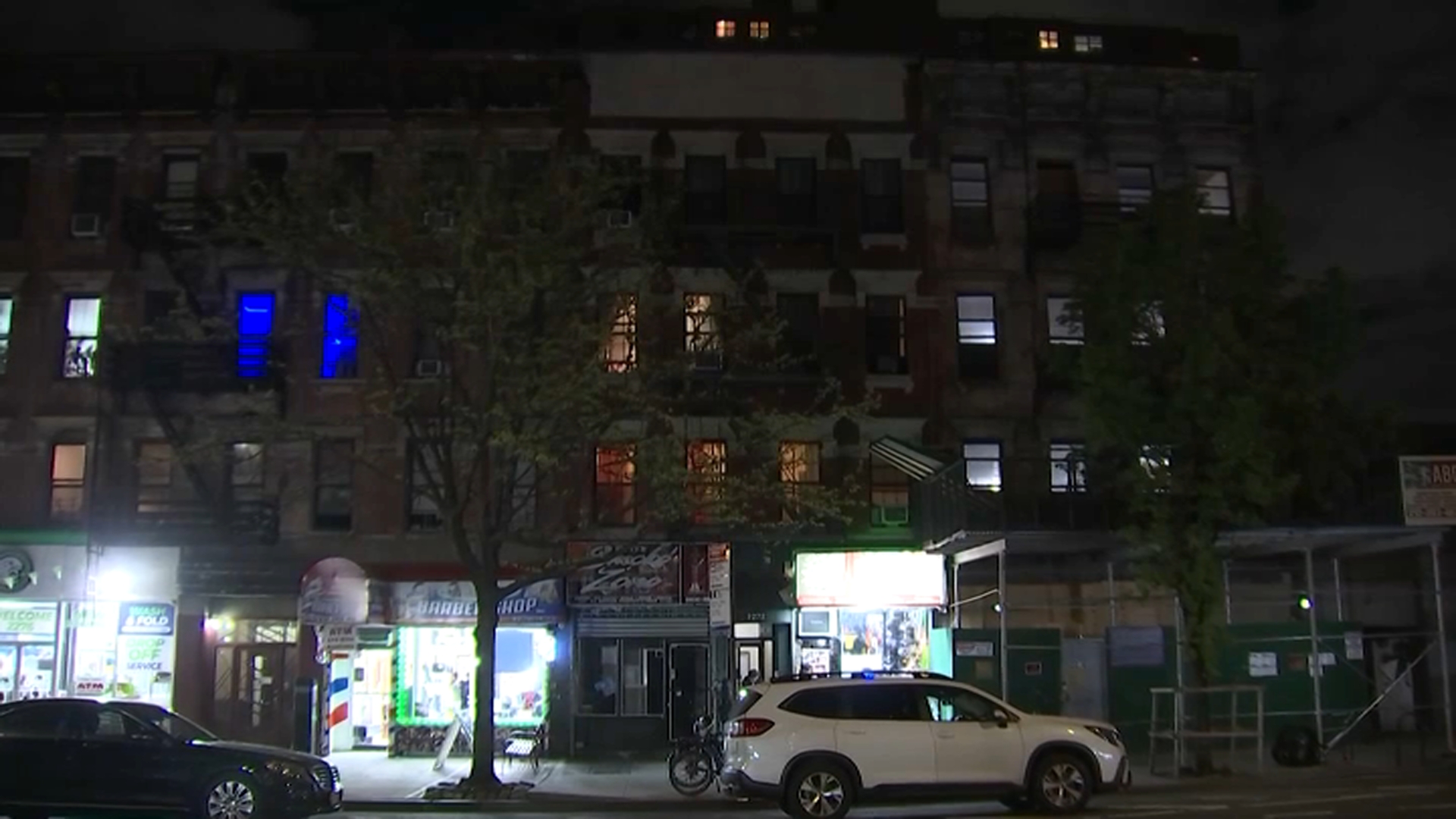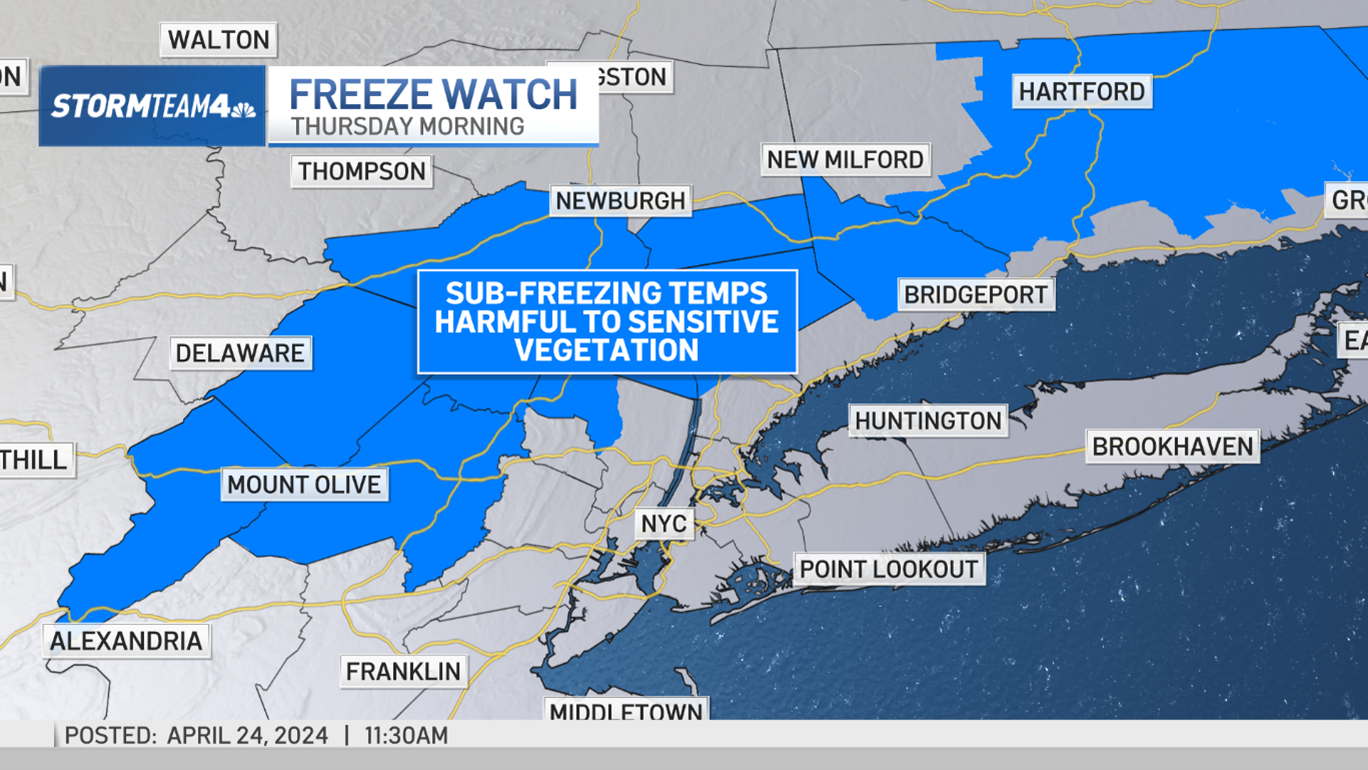What to Know
- A Newark cop faces criminal charges after a Jan. 28 traffic stop lead to a shooting that left one man dead, prosecutors announced
- Jovanny Crespo, 26, was indicted on aggravated manslaughter and other charges in May; he had previously been suspended without pay
- Two Newark men in the car, 35-year-old Andrew Dixon and 46-year-old Gregory Griffin, were shot. Griffin died the next day
The Newark police officer charged with manslaughter for allegedly shooting and killing a man fleeing a traffic stop after a harrowing pursuit caught on his own body camera tells News 4 in an exclusive interview that he would do it again if put in the same situation.
“I could have been dead,” 26-year-old Jovanny Crespo said, his first comments since he was indicted by an Essex County grand jury in May. “I believe my actions kept me alive. I think about my four kids I have and I thank God I got to go home that night.”
Crespo described in detail his perspective of the events as they unfolded late the night of Jan. 28 – a timeline that he says included an estimated seven gunshots fired only by his department-issued weapon that ultimately ended in the death of 46-year-old Gregory Griffin. Another Newark man in the car at the time, 35-year-old Andrew Dixon, was wounded in the fray but survived.
According to Crespo, Newark was on high alert at the time. In the two months leading up to the shooting, he says he arrested six people and recovered eight guns. He says his lieutenant had warned officers before they went out that January night to expect a retaliation shooting in the city. Crespo described that week as the most drastic week he experienced in his two years on the force. But he says he wasn’t “trigger-happy.”
“Trigger-happy? No, never,” Crespo said. “I never think about firing my weapon unless my life is at risk, somebody’s life is at risk.”
And to Crespo, his life – and the lives of others – were at risk that Monday night in January.
As he tells it, another officer radioed in that an armed suspect fled a traffic stop. Crespo, who on patrol with his partner, says he saw a car coming at them head on and told his partner to make a U-turn. There was a pursuit. The suspect vehicle slowed.
Crespo says he went to get out of his car and could see both the driver and passenger through the windshield and driver’s side window, despite the glass being tinted. The vehicle sped off again before he had a chance to do anything further. He got back in the patrol car with his partner and they started to pursue the other vehicle again.
Then the suspect’s car stops a second time. Crespo says his partner stopped their vehicle and Crespo got out; he ran around the back of the patrol vehicle and tried to open the passenger door.
“As I open it, I could see the passenger holding the gun directly at me. At that moment I fired my weapon,” Crespo said. He says he fired one shot at first, then two more as he ran back toward the patrol car. The suspect vehicle drove off once again.
For a third time, Crespo and his partner engaged in a pursuit. The 26-year-old described seeing the passenger door opening and closing, recounting his concern that the passenger would jump out and run or fire out the open door.
“At that moment, I got a split-second decision to make. I see the passenger holding the gun. At that moment, I fire again,” Crespo says, estimating he shot another two bullets.
Local
And again, Crespo says the suspect’s vehicle started to drive away. Again, he saw the passenger door start to open, and Crespo says he told his partner the passenger had pointed a gun at him. The suspect’s vehicle slowed. Crespo says he got out of the patrol car, raced to the passenger side and could still see the man with a handgun.
Fearing he would shoot through the door, Crespo says he fired his weapon two more times. Then he opened the passenger side door and saw a gun – one that would later be confirmed to have been a loaded semi-automatic weapon – on the floorboard. Crespo says he took off the passenger’s seat belt, tried to put him in handcuffs and called for an ambulance to help the wounded man. That man died the next day.
Prosecutors have challenged Crespo’s statements that he could see the passenger holding a weapon. How could he see through the tinted windows? Crespo insists the LED lights and sirens from police vehicles, as well as the street lights, gave him a clear view through the passenger’s window. And to anyone who denies he could have seen a weapon through tinted windows in the pitch black of night, Crespo says, “That’s a lie.”
The officer was indicted in late May, nearly four months after the deadly chase, on charges including aggravated manslaughter, aggravated assault, possession of a weapon for an unlawful purpose and official misconduct. Prosecutors said it was the first fatal police-involved shooting to result in an indictment in recent memory.
In announcing the indictment, prosecutors described Crespo’s actions as “criminal” and said they were not in line with his training.
“He showed a reckless disregard for human life by shooting into a moving vehicle — a vehicle which had heavily tinted windows," Acting Essex County Prosecutor Theodore Stephens said.
To that, Crespo’s response is simple: “He wasn’t in my shoes. He didn’t see that gun pointed directly at his face. He didn't see that car driving erratic, putting other lives in danger. I saw a vehicle at 11 o’clock at night driving 70 mph on the other side of the road, putting lives at risk.”
“We didn't receive any training that could help me with that incident right there, with split second decisions,” Crespo added. “You have to go with your gut, what you think you have to do to survive.”
No police officers were injured in the shooting. No other officer fired a weapon. Crespo says that’s because no other cop got as close to the vehicle as he did.
“I was the only one who had the gun pointed at me,” he says.
Prosecutors released graphic body camera and dash camera video, as well as dispatch audio related to the police chase and shooting. In Crespo's body camera video footage, you can hear someone, presumably Crespo, telling the other officer in the police car at one point, "I think I shot him. I seen a gun. He pointed a gun at me." It also shows him fire at the car on three separate occasions – the last at nearly point blank range.
While the public may view him as a killer because of that body camera video – and the portrait he says prosecutors have painted of him – Crespo says he didn’t feel the grand jury saw all of the footage that led up to the deadly shooting. He testified voluntarily before that grand jury, and tells News 4 he still feels he saved lives that day.
“It was either go to the vehicle and fire upon them or be killed or somebody else was going to get killed,” Crespo says. “In my head I know I did the right thing. As long as my kids and my family know I did the right thing, then I can live with it.”
Facing a potential life sentence if convicted of all charges against him, Crespo realizes the frightening uncertainty of his future. He says he has no regrets, though he does say he feels for the families of those he shot.
“I feel bad for their families, what they had to go through,” Crespo said. “But at the end of the day, I had to get home to mine.”



